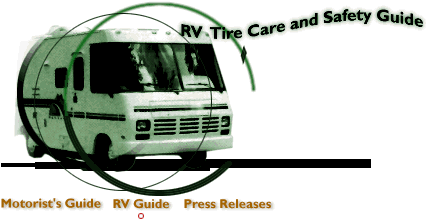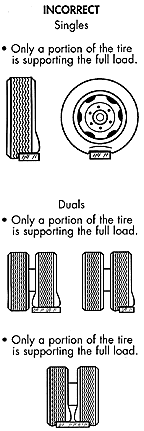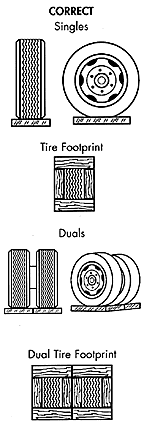The purpose of regularly rotating tires is to prolong their useful tire life by achieving more uniform wear for all tires on a vehicle. Before rotating tires, check your owner's manual for rotation recommendations for specific vehicles. If no rotation period is specified, rotate your tires every 6,000 to 8,000 miles or at any sign of uneven wear. If the tires show uneven wear, ask a serviceperson to check for and correct any misalignment, imbalance, or other mechanical problem before rotation.
Rotating the tires as recommended by the RV or tire manufacturer will help even out the amount of wear on each tire and extend the life of the entire set.
Note: Some kinds of tires cannot be rotated in the manners described below. Such tires include uni-directional tires and tires with asymmetric tread designs. Also, some vehicles may have different-sized tires mounted on the front and rear axles, and these different-sized tires have rotation restrictions. Check your owner's manual, or with your tire dealer, for the proper rotation recommendations for these special cases.
When tires are rotated, the inflation pressures must be adjusted for the tire's new positions in accordance with the actual loads on that wheel position. Underinflated or overinflated tires may result in poor handling, uneven treadwear and increased fuel consumption.
Note: Lugnuts should be properly torqued anytime a tire/wheel/rim assembly is re-installed on the vehicle.



